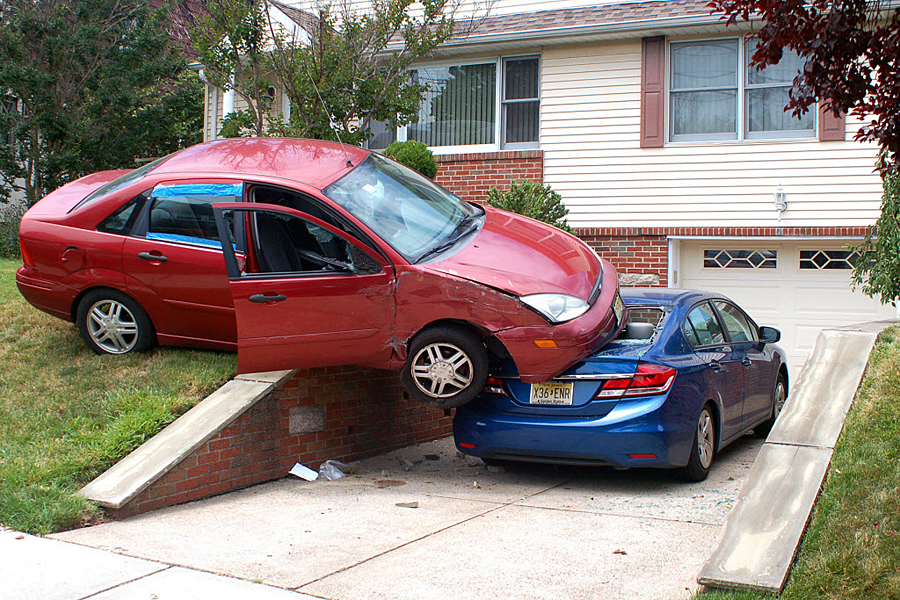Can the US lower its crash death rate?
Loading...
Thousands of lives and hundreds of millions of dollars in medical costs could be saved each year if the United States were to clamp down on drunk driving, speeding, and failing to wear a seat belt, the Centers for Disease Control and Prevention (CDC) said in the Vital Signs report it released Wednesday.
The report – which compared rates of crash deaths in the US and 18 other high-income countries between 2000 and 2013 – found that while the US saw its rate of crash deaths decrease by 31 percent, the country remained the leader in the most crash deaths per 100,000 people. If the US were to lower this rate to Belgium’s (the country with second highest), 12,000 lives would be saved annually, as well as $140 million in medical costs. If the US were to lower it to Sweden’s (the country with the lowest), 24,000 lives a year would be saved, as well as $281 million in medical costs.
In its report, the CDC lays out a roadmap for the United States, encouraging more measures to prevent drunk driving and speeding, while encouraging drivers and all passengers to wear seatbelts. But different highway safety laws and attitudes from state to state suggest that implementing these measures universally won’t be easy. Still, the CDC’s report serves as a reminder of the effect such efforts could have, said Erin Sauber-Schatz, the transportation safety team leader of the CDC’s National Center for Injury Prevention Control.
“It’s unacceptable for 90 people to die on our roads each day, especially when we know what works to prevent crashes, injuries, and deaths,” said Dr. Sauber-Schatz, in a statement. “About 3,000 lives could be saved each year by increasing seat belt use to 100 percent, and up to 10,000 lives could be saved each year by eliminating alcohol-impaired driving.”
In its report, the CDC found the rate of crash deaths in the US was 10.3 per 100,000 people in 2013, with 32,000 deaths and 2 million more injured that year. The other countries analyzed included France, Germany, and Britain.
The US also had the second highest percentage of crash deaths involving alcohol (31 percent), only behind Canada (34 percent); and the third lowest rate of front-seat belt use (87 percent), with France having the highest (99 percent) and Austria having the lowest (86 percent). To develop the report, the CDC analyzed data compiled by the World Health Organization and the Organisation for Economic Cooperation and Development.
The CDC acknowledged that its comparison isn’t completely apples-to-apples: The US’s population and its dependence on driving are the highest of all the countries. Nevertheless, the report offers a slew of solutions as to how more lives can be saved.
Among the CDC’s recommendations are encouraging drivers and passengers to avoid drinking and driving; to “use a seat belt in every seat, on every trip, no matter how short”; and to obey speed limits and avoid distractions like texting and talking on the phone.
The CDC also offers a series of legal ways to encourage this behavior. One is to mandate all drivers and passengers wear a seat belt. Thirty-three states have primary seat belt laws for passengers in the front seat, meaning law enforcement can ticket a driver or passenger for not wearing a seat belt even if there is no other traffic violation; 16 states have secondary seat belt laws, meaning law enforcement can issue a ticket only if they suspect another traffic violation. Sixteen states also require passengers in the rear seats to wear a seat belt.
New Hampshire is the only state that does not require a seat belt be worn. But it was Maine's Republican state senator Eric Bakey who spoke to the heart of this debate when the New England state considered ending its mandatory seat belt requirement.
"Government exists to protect us from each other, not to protect us from ourselves," said Mr. Brakey, according to the Associated Press.
In the CDC report, it also recommends states require ignition interlock technology for drivers convicted of drunk driving. With this device, drivers can only start their cars if they pass a Breathalyzer test. Mothers Against Drunk Driving (MADD) is lobbying for all states to adopt this requirement. Twenty-seven states require it for all offenders now.
The report does show progress. But the CDC warns against complacency.
“It is important to compare us not to our past but to our potential. Seeing that other high-income countries are doing better, we know we can do better too,” said Debra Houry, director of CDC’s National Center for Injury Prevention and Control.







